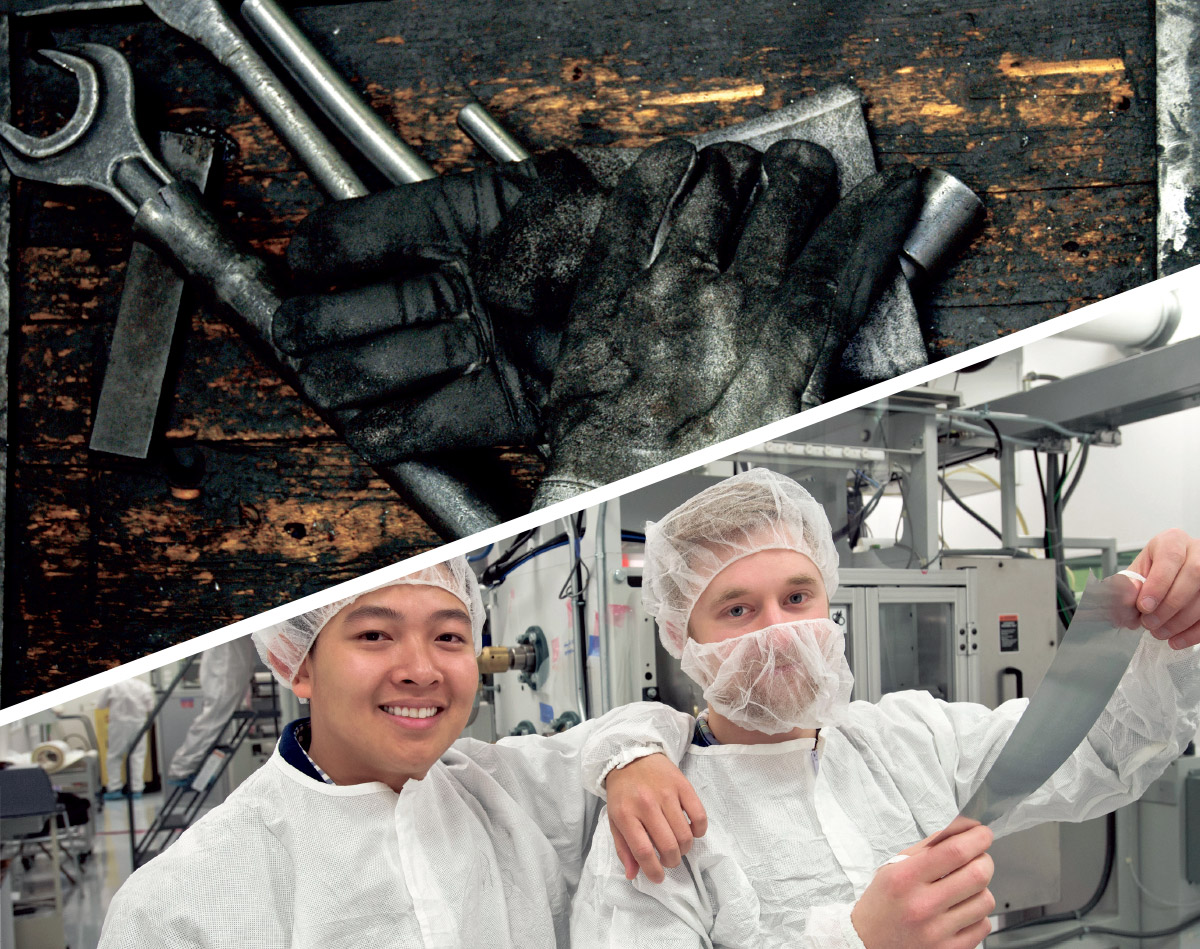
Even though the manufacturing industry has shifted toward clean rooms and higher-paying positions, the industry still suffers from the notion its employees operate in less-than-desirable work environments.
The manufacturing industry still struggles to change the perception of dead-end jobs and layoffs from 30 years ago
Manufacturers contributed $2.8 trillion to the economy last year, so why does Generation Z view manufacturing as a notoriously bleak industry?
The National Association of Manufacturers (NAM) reports, “Over the next decade, nearly 3.5 million manufacturing jobs will likely be needed, and 2 million are expected to go unfilled due to the skills gap.” According to the Pew Research Institute, Gen-Z accounts for more than 25 percent of America’s population and has just begun to enter the job market.
Unfortunately, manufacturing is misunderstood.
“The perception of manufacturing is that there are not sustainable wages or careers in manufacturing,” said Kathie Mahoney of the Massachusetts Manufacturing Extension Partnership. “However, the opposite is true.”
The manufacturing industry accounts for approximately 9 percent of the state output and employs 8 percent of the total state workforce. Furthermore, Mahoney reports the average annual compensation reaches $85,450 – coming in high above Massachusetts’ living wage.
Holding onto parents’ stereotypes
Problems of perception may stem from the fact manufacturing hasn’t always been on the upswing. Many Gen-Xers recall entering the job market 30 years ago when, according to the Bureau of Labor Statistics (BLS), over 5 million more manufacturing jobs existed than today.
Take, for example, director of counseling for Auburn High School, Tess Jarvis. In a non-vocational setting Jarvis has found this same Gen-X mentality persists among her Gen-Z students.
“With the overall decline in manufacturing career opportunities over the years, high school graduates typically do not seek careers in manufacturing,” she said.
Jarvis is eager to aid all of her students in obtaining job security and recognizes there are 12.3 million manufacturing workers in America.
“I would hope local businesses are seeking to grow and hire [Auburn graduates.] We would love to hear from them to connect our students who are not continuing on to four year schools,” she said.
Stigma around those studying manufacturing
At Blackstone Valley Regional Technical High School (BVT), School Counselor, Caitlin Forgit said the Manufacturing & Engineering Technology program is in high demand. Participants in the program receive a foundation in machining, metal fabrication, and welding disciplines.
BVT instructors emphasize the collaborative abilities pertinent in modern manufacturing, citing a shortage of skilled workers in the advanced manufacturing field.
The popularity of vocational training is on the rise, which could be a good sign for the manufacturing industry.
A 2016 study conducted by the Kitty and Michael Dukakis Center for Urban and Regional Policy found a better marketing strategy is desired by school administrators in order to obtain funding for Career/Vocational Technical Education (CVTE), noting vocational school waiting lists remain large in many regions of the state.
Researchers said the stigma CVTE programming is directed at academically challenged students, but found this simply wasn’t the case. The study detected a strong demand for vocational programs among high-performing students.
“So successful is the Commonwealth’s CVTE programming that, without further support, young adults planning to enter the occupations and trades for which it was originally intended could be squeezed out by the college- and professions-bound,” the study said.
Shifting the narrative
In order to bridge the gap between high school students, vocational students and employers, NAM has instituted a National Manufacturing Day in October. With 3.5 million jobs on the horizon, manufacturers are clamoring to shift the Gen-Z narrative.

“The perception of manufacturing is that there are not sustainable wages or careers in manufacturing. However, the opposite is true.”
—Kathie Mahoney of the Massachusetts Manufacturing Extension Partnership.

Employees at Central Massachusetts companies (clockwise from lower left) Saint-Gobain in Worcester, Space Age Electronics in Sterling and Columbia Tech in Westborough operate in environments more reflective of what the industry has become.
At present, Massachusetts has 10 events planned throughout the state in celebration of Manufacturing Day, which will include tours and educational seminars geared toward young people. It is NAM’s hope by literally opening its doors to the next generation, it can paint a fresh picture of manufacturing for Gen-Z. ◾


